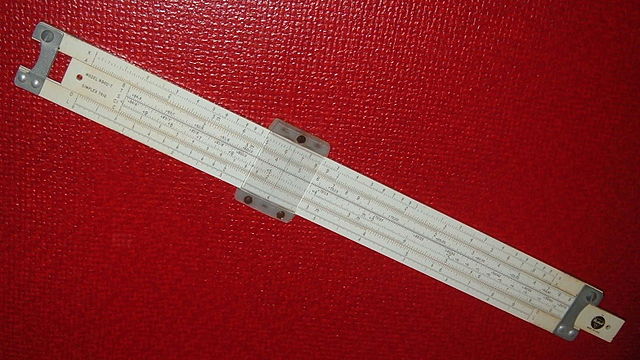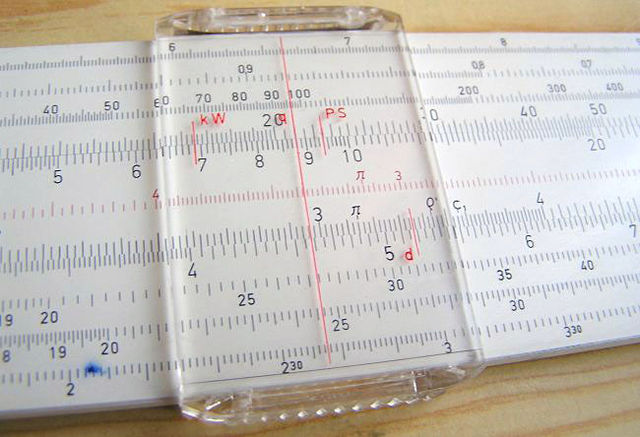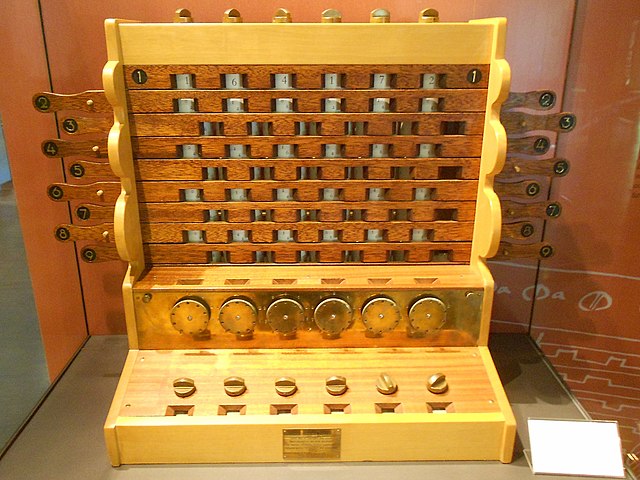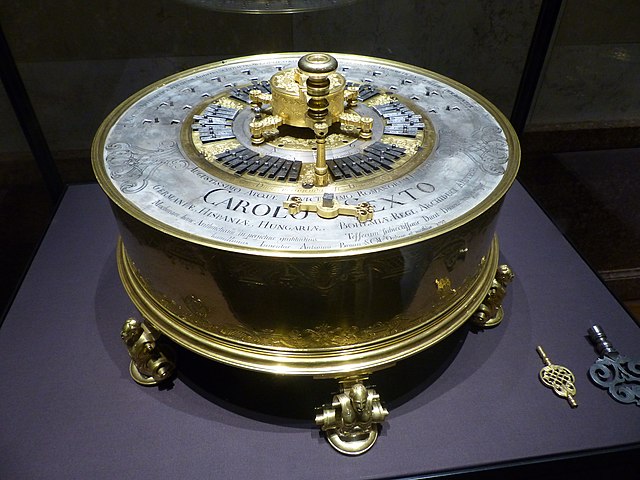A slide rule is a hand-operated mechanical calculator consisting of slidable rulers for evaluating mathematical operations such as multiplication, division, exponents, roots, logarithms, and trigonometry. It is one of the simplest analog computers.
Typical ten-inch (25 cm) student slide rule (Pickett N902-T simplex trig)
Cursor on a slide rule
This slide rule is positioned to yield several values: From C scale to D scale (multiply by 2), from D scale to C scale (divide by 2), A and B scales (multiply and divide by 4), A and D scales (squares and square roots).
A 7-foot (2.1 m) teaching slide rule compared to a normal-sized model
A mechanical calculator, or calculating machine, is a mechanical device used to perform the basic operations of arithmetic automatically, or (historically) a simulation such as an analog computer or a slide rule. Most mechanical calculators were comparable in size to small desktop computers and have been rendered obsolete by the advent of the electronic calculator and the digital computer.
Four of Pascal's calculators and one machine built by Lépine in 1725, Musée des Arts et Métiers
Replica of Schickard´s calculator
Detail of a replica of an 18th-century calculating machine, designed and built by German Johann-Helfrich Müller.
A mechanical calculator from Anton Braun, dated 1727








